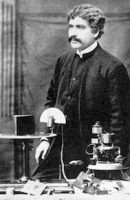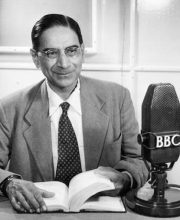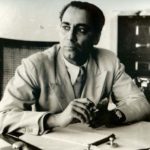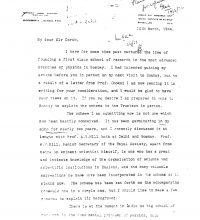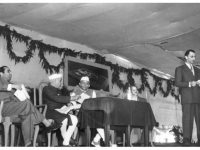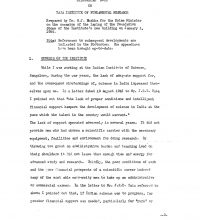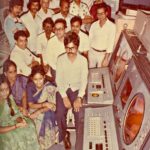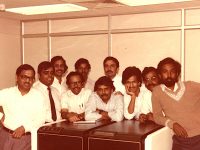A Timeline of Computers and IT in India.
This timeline of development of computers and information technology in India is partly based on the excellent paper: “History of Computing in India 1955 – 2010″ by V .Rajaraman (IISc Bangalore), written for the IEEE Computer Society. Furthermore the paper :TIFRAC, India’s first computer — A retrospective. P.VS.Rao, Resonance 2008,13,420-429; others are indicated as links in the text.
1909
The Indian Institute of Science (IISc) was founded with visionary support from Jamsetji Nusserwanji Tata (read here). Interestingly Tata had an accidental meeting with Swami Vivekananda aboard a steamer on the way to North America from Japan in September 1893 where he discussed his idea of starting a research university. The encounter was later recounted in a letter Tata wrote to Vivekananda in November 1898. The institute was established only after Tata’s death in 1904.
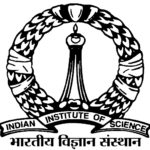
1917
Sir Jagdish Chandra Bose, one of the pioneers of the radio and microwave optics, creates the pluridisiplinary Bose Institute in Kolkata established in 1917. The Institute was dedicated to the service of India during his 30 November 1917 speech “The Voice of Life“.

1931
Prasanta Chandra Mahalanobis founds the Indian Statistical Institute (ISI) in Kolkata in 1931. Mahalanobis introduced the use of mechanical calculators in lieu of manual calculations.
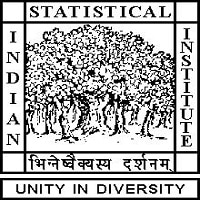
1935
An Industrial Intelligence and Research Bureau is created by the colonial Government under the Indian Stores Department (instead of the proposed Department of Scientific and Industrial Research).
1942
The Council of Scientific and Industrial Research (CSIR) is created, with Shanti Swarup Bhatnagar as Chairman. Bhatnagar proposed the creation of five national research laboratories amongst which the National Chemical Laboratory and the National Physical Laboratory all created by the time of Indian independence.
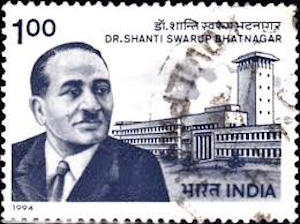
1943
P.C.Mahalanobis sets up the Indian Calculating Machine and Scientific Instrument Research Society. One of the aims was local production of mechanical calculating and tabulating devices, including unit record machines.
1945
Homi Jehangir Bhabha founds the Tata Institute of Fundamental Research (TIFR) with support from J.R.D. Tata. TIFR started operation on the IISc Bangalore campus.
1947
India independent.
1948
H.Bhabha founds the Atomic Energy Comissionwith the help of Shanti Swarup Bhatnagar.
1951
First Indian Institute of Technology (IIT) set up in Kharagpur.
1953
Under the impetus of P.C.Mahalanobis work performed at the ISI Calcutta leads to the making of the first Indian indigenous analog computer. Samarendra Kumar Mitra and Soumyendra Mohan Bose were asked to design this computer which could solve linear equations required for regression analysis. Part of the computer components came from junkyards…
1954
The Bhabha Atomic Research Centre (BARC) is established.
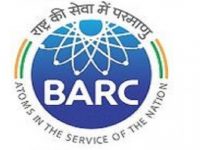
1955
The British Tabulating Machines HEC‐2M computer: a 16 bit vacuum tube and magnetic drum machine is bought and is Installed at ISI, Kolkata.
1955/56
As a result of Dr Homi Bhabha’s philosophy of developing internal competence in high technology, work started at TIFR on designing a homebuilt computer. A Computer Section was formed as part of the Electronics Instrumentation Group of TIFR in 1955, with R.Narasimhan and team. With possibly the exception of R.Narasimhan nobody in the team had any ideas about computers. A test computer prototype was however successfully designed.
1957/60
R.Narasimhan group at TIFR design a full scale, Illiac inspired, computer: the TIFRAC-Tata Institute of Fundamental Research Automatic Calculator (more about TIFRAC).
1958
- Russian URAL‐1 vacuum tube computer, installed at ISI, Kolkata. It has assembly language programming.
- Indian Institute of Technology (IIT) set up in Bombay
1959
- Indian Institute of Technology (IIT) set up in Kanpur and Madras (Chennai).
- IBM starts manufacturing key punch machines in India.
1961
- The ISIJU Project to make a transistorized computer begins as a collaboration between ISI and the Jadavpur University.
- First IBM 1401 installed at the ESSO Standard Oil Co., Mumbai. IBM 1401 refurbishing started at Mumbai in 1962.
- Indian Institute of Technology (IIT) set up in Delhi.
1962
An IBM 1620 is installed at the IIT at Kanpur. This was the first computer with a FORTRAN compiler in India. Education using FORTRAN begins.
1964
- An IBM 1401 is installed in ISI, Kolkata. Intensive courses on computing are given at IIT/Kanpur.
- A CDC160A‐3600 mainframe is installed at TIFR, Mumbai.
- The First International Conference on Computing held at IIT/Kanpur.
1965
- 30 IBM 1401s and 12 ICL 1901s installed in India.
Computer Society of India registered in Hyderabad.
1966
- An IBM 7044 is installed at IIT/Kanpur.
- The ISIJU project was completed.
- M.Tech in computers started at the Electrical Engineering Department IIT/Kanpur.
1967
Electronics Corporation of India Limited-ECIL established at Hyderabad by the Department of Atomic Energy to commercialize electronic instruments designed at BARC. Dr. S. Srikantan was head of the computer division.
- Ten Honeywell computers are installed for the Department of Statistics, Government of India.
1968
- TCS (Tata Consultancy Services) is established in Mumbai by Tata using an IBM 1401.
- An IBM 1401 is installed as I/O computer for the IBM 7044 at IIT/Kanpur.
1969
- BARC commissions the TDC-12 computer: a real‐time data acquisition computer.
- HP time sharing computers installed in IIM/Ahmedabad
1970
- The Government of India established the department of electronics (DoE) in 1970 to oversee all aspects of electronics, including computers.
- ICL and Bharat Electronics Ltd. (BEL) agree to manufacture 48 ICL 1901A in India.
1971
- Fourteen IBM 1401s installed by the Indian Railways. (IBM 1401 stopped in USA).
- The TDC 12 computer is marketed by ECIL.
1972
- A DEC 1077 is installed at NCSDCT at TIFR with UNDP (United Nations Development Program) assistance.
- Research groups in graphics, networks, databases & compilers are formed. Separate MS and PhD degrees are offered in Computer Science at IIT/Kanpur. This is the first such programme in India.
1974
- The TDC 312 computer is marketed by ECIL. It used imported ICs, locally made PCBs, and imported peripherals.)
- ECIL imported the 32 bit French IRIS 55 computer and reverse engineered these to make the TDC 332.
- Regional Computer Centre (RCC) set up at Pune with an ICL mainframe.
- TCS imports a Burroughs mainframe.
1975
- Tata Burroughs is established.
- Burroughs B1728 and B6738 installed.
- Transistorised TDC 316 produced.
- Engineers India install the IBM 360 inspired Ryad 1040 from East Germany & Ryad1030, 1020 from USSR.
- DATAMATICS is founded by Lalit.S.Kanodia.
1976
- Patni Computer Systems was founded in 1976 by Narendra Kumar Patni. Patni is considered by some as pioneer of India’s information technology services revolution. NR Narayana Murthy was head of the software division from 1977 to 1980.
- CMS is formed for IBM 1401 maintenance.
- Hindustan Computers Limited (Microcomp Limited) is founded by Shiv Nadar.
- DoE starts the Appropriate Automation Promotion Program (AAPP) / Industrial Electronics Promotion Programme (IEPP).
1977
The Regional Computer Centre, Calcutta, is established with a Burroughs B‐6738 computer.
1978
- IIT Kanpur starts the first IIT B.Tech in Computer Science.
- ORG, DCM, HCL, and IDM, start manufacturing UNIX minicomputers.
- The Regional Computer Centre, Chandigarh (RCC) is established with a DEC 2050 system.
- IBM closed operations in India (in 1973 it had declined to dilute equity locally).
1980
- Tata Research Design and Development Centre (TRDDC) created.
- TALLY – an accounting software product company is established.
1981
- INFOSYS is established by Narayana Murthy along with Nandan Nilekani, S. Gopalakrishnan, S. D. Shibulal, K. Dinesh, N. S. Raghavan, Ashok Arora (image)
- Wipro markets 8086 minicomputer.
- NIIT starts private computer training school.
1982
- AAAP centers for Delhi, Ahmedabad, Calcutta, and Trivandrum are funded by UNDP: training in microprocessor use in automation.
- Ashank Desai,Ketan Mehta, R. Sundar start MASTEK software in Mumbai.
- A world 1st: a microprocessor based voting machine is developed and used in a state election in India.
- Import of Colour TV tubes is allowed.
- NCST establishes VSAT network with 32 Kbps packet
1983
NCST started as split off from NCSDCT of TIFR.
1984
- SOFTEK first company to develop compilers for COBOL, BASIC, and FORTRAN for locally made computers.
- CDOT set up to design electronic telephone exchanges by Indian engineers.
- CAD Centres at IISc/Bangalore, IIT/Kanpur, IIT/Bombay and Jadavpur University at Kolkata.
- Computer Assisted Literacy And Study in Schools (CLASS) programme launched by the DoE using BBC Acorn microcomputers (4 computers per school; 250 schools; partly UK subsidized).
- Government of India approves setting up of a National Supercomputer Centre at the IISC Bangalore.
1985
- Department of Telecommunication (DoT) established and Telephone services are privatised.
- Software export USD 30 million (CMC, TCS, and TBL main contributors).
- Texas Instruments facility at Bangalore established to export electronic CAD software using satellite communication with its Dallas Centre in the USA.
- ERNET project starts with UNDP assistance.
- Sampath committee on education – teacher training programme
suggested. - Knowledge Based Computer Systems Development Programme (KBCS) project funded by UNDP and the DoE. IIT,Madras, IISc,Bangalore, ISI,Kolkata, NCST,Mumbai, TIFR,Mumbai and IIT,Bombay participated.
- UNDP assisted Microprocessor Applications Engineering Program (USD 1.53 million) – 5 regional centres at Jabalpur, Bangalore, Ranchi, Pune and Delhi.
1986
- VSNL (Videsh Sanchar Nigam Ltd.) set up for overseas communication.
- INDONET established by CMC. SNA network with IBM computers and leased lines from the DoT.
- New policy on computer software export, software development and training.
- Project to computerize reservation of tickets in the Indian Railways completed. Reservation office in New Delhi with 50 windows started.
- NIC acquires SX1000 mainframe computers from Japan for software development for government departments.
- NIIT starts franchising training centres.
- Rajaraman committee submits report to establish a centre for developing high performance parallel computers.
TEC Mahindra established
1987
- Sterling Computers sells “affordable” PCs
- Collaboration on “branded” workstations begins with Hinditron‐DEC, HCL‐HP, and PSI‐Honeywell Bull.
- Indian Banks’ Association Standardizes use of UNIX, Micro focus COBOL, and X .25 for networking and IBM PC clones appear in all banks.
1988
- National Association of Software and Service Companies (NASSCOM) established.
- RCC Calcutta installs CDC 180/840A mainframe.Cray XMP 14 installed in the Centre for Medium Range Weather Forecasting.
- Centre for Development of Advanced Computers (CDAC) established in Pune
1989
- NCST connects ERNET to Internet via UUNET.
- India’s software services export reaches USD 100 Million.
1990
- Software Technology Parks set up by the DoE with shared satellite communication links to promote software export.
- Multinational Corporation MNCs enter India for offshore software development.
- HITEC City was launched in 1990s by Larsen & Toubro (L&T) and Andhra Pradesh.
- Hexaware company 1990 founded by Atul Chandra Nishar
1991
- New industrial policy – Multi National Companies (MNCs) welcomed.
- Software “development centres” set up for individual Fortune 500 companies by TCS.
- National Supercomputer Centreat the IISc, Bangalore starts with a Cyber 992, 2 CDC4360, a VAX8810, 9 IBM6000/580s connected with a fibre optic net to work in parallel, 48 IBM RS6000/340, 24 Silicon graphics workstations, 25 Sun workstations, and a campus‐wide fibre optics network.
- CDAC completes design of PARAM 8000 parallel computer with 1 Gflop speed. Uses 64 Inmos T800 Transputers.
Several upgrades followed. PARAM 8600 was 256 CPU computer using Intel i860 processors, with a 5GFlop performance. Param 9900/SS desgned as an MPP system using Sun SPARC II processors. Later variants the 9900/US used the UltraSPARC and the 9900/AA the Dec ALPHA processors.
1992
- Tata and IBM form a 50:50 joint venture company.
- Software product Flexcube for banks developed by IFlex.
1993
- Indian Satellite Development Centre at Bangalore installs a distributed computer system with 9 IBM RS6000/530s, 9 RS6000/220s and 33 RS6000/220s.
- Private software companies allowed dedicated satellite links with customers in the USA.
1994
- Government monopoly in telecommunication ends.
- American Express sets up Business Process Outsourcing Centre in Mumbai.
- 200 satellite links installed by software companies to facilitate offshore software development.
- Oracle sets up development centre in Bangalore.
1995
- First commercial Internet service started by VSNL.
- Private e‐mail service introduced (non Internet).
- DoE launches programme to accredit private computer training institutes due to proliferation of below par training institutes (named DOEACC scheme).
1996
The first e-commerce portal : Rediff.com is established by Ajit Balakrishnan.
1997
- Digital Signal Processing chip “Ankur” designed by TI India centre at Bangalore.
- GE Capital International Services starts back‐office services centre.
1998
- IIIT/Allahabad established.
- VSNL establishes connection to Global One’s 1400 points of presence worldwide.
- Microsoft Software Development Centre started at Hyderabad.
- Motorola Design Centre established in Delhi.
- IBM Research Centre set up in New Delhi.
C-DAC unveils PARAM 10000 HPC. PARAM 10000 used independent nodes, based on the Sun Enterprise 250 server, each with two 400Mhz UltraSPARC II processors. The base configuration had three compute nodes and a server node. The peak speed of this base system was 6.4 GFLOPS. A typical system would have 160 CPUs. The performance was typically 100 GFLOPS, but scalable to the TFLOP range. It was exported to Russia and Singapore.
1999
- IBM sets up fully owned subsidiary in India. Tata’s stake in TATA‐IBM bought by IBM.
- 100% Foreign Direct Investment in IT allowed paving way for MNCs entry into India.
- 6 out of 12 SEI CMM level 5 companies in India.
- The Railway Reservation System is now linked nationwide.
2000
- IT Act 2000 passed by Parliament to facilitate e‐commerce
- Software export reaches USD 5 billion.
- HP Global sets up BPO in Bangalore.
- 12 Software Technology Parks host close to 1200 software companies.
- Startup company Spectramind gets capital to set up back‐office to process transactions of Internet portals worldwide.
- Private companies allowed setting up international gateways.
2001
- Tata group takes over 51% of CMC Ltd. from the government and also VSNL
- 10 companies obtain CMM level 5 certificates. 14 companies obtain CMM level 4 certificates.
- Dell sets up R&D centre.
- Simputer, a hand‐held multilingual computer, is designed by a group of IISc and Encore Software Ltd. engineers at Bangalore.
- Accenture starts centre in Mumbai.
2002
National Institute for Smart Governance set up in Hyderabad a joint initiative of NASSCOM, Government of India and Government of Andhra Pradesh.
2003
- CDAC’s PARAM PADMA ranks 171 in top 500 high performance computers.
- High performance DSP chip designed at TI India at Bangalore.
- Yahoo sets up R and D Centre at Bangalore (first outside the USA).
2004
- National E‐Governance plan announced.
- General Elections held using only Electronic Voting Machines. This meant deploying 1,075,000 EVMs across India.
- TCS, INFOSYS and WIPRO all cross USD 1 Billion revenue.
- Government of India announces Broadband Policy (fibre/DSL).
- Google sets up first R&D Centre outside the USA in Bangalore.
- IBM acquires Daksh, the largest Indian BPO company.
- Number of employees in IT industry reaches 1 million.
- Mobilis, a low cost mobile tablet computer designed by Encore Software Ltd., Bangalore, attracts wide attention.
2005
- Oracle acquires IFlex an Indian Banking software product company.
- Special Economic Zone (SEZ) Act passed. SEZ defined as “specifically demarked duty‐free enclave deemed to be foreign territory (out of customs jurisdiction) for trade, duties and tariffs”.
2006
- CISCO establishes Globalization Centre East in Bangalore
- IBM announces plans to invest USD 5 billion in India.
- SAP (German ERP major) announces USD 1 billion investment in India over next 5 years.
- India’s software and services export revenue reaches USD 10 billion.
2007
- 257 IT companies set up in SEZ.
- Special incentive package announced by the Department of Information Technology to encourage investments in semi‐conductor fabrication industry.
- The Computational Research Laboratory of the Tata group builds the EKA supercomputer that is the fourth fastest in the world and fastest in Asia.
2008
- TI (India) designs single‐chip solution for ultra‐low‐cost mobile handset.
- Accenture opens Technology lab in Bangalore (Fourth in the world after the USA and France).
- 2G spectrum allocation on first come first served basis.
- IT (amendment) Act passed by Parliament to strengthen IT Act 2000.
- National Knowledge Network project started by the Government of India.
2009
- IBM attains the second largest workforce in India after the USA. Will invest USD 100 million for global mobile services research in India.
- SAP’s third co‐innovation lab in Bangalore (other labs in Palo Alto and Tokyo).
2010
- IT exports including software, services and BPO reaches USD 50 billion.
- IT domestic revenue USD 24 billion.
- 55% of the global outsourcing market sourced from India.
- Indian IT companies present in 52 countries and have 400 of the Fortune 500 companies as clients.
- Direct employment 2.4 million in IT and 8.2 million in support services.
- 5% of GDP earned by IT industry.
- Rs.600 billion allocated over a 10 year period for the National Knowledge Network.
Supercomputers beyond 2010.
2011
SAGA-220 (Supercomputer for Aerospace with GPU Architecture-220 teraflops) supercomputer built by the Indian Space Research Organisation (ISRO).The system uses 400 NVIDIA Tesla C2070 GPUs and 400 Intel Quad Core Xeon CPUs
2013
PARAM Yuva II, 524 TFLOPS supercomputer, built by C-DAC and Netweb Technologies.
2015
The Indian government approved a seven-year supercomputing program worth $730 million (Rs. 4,500 crore).
2016
Several PARAM machines built: 15 Tflop Kanchenjunga – CDAC with NIT Sikkim; SHAVAK, a small 4Tflop system by C-DAC; ISHAN – CDAC and IIT Gawhati a 250 Teraflop computer.
2017
- A PARAM Yuva II with a theoretical peak performance of 532Tflops made by C-DAC.
Government of India approved financing to build a supercomputer with a computing capacity of 10 PetaFlops.
2018
The fastest supercomputers in India start operation: Pratyush and Mihir. These are two HPC Cray XC40 units: a 4.0 PetaFlops unit at IITM, Pune and a 2.8 PetaFlops unit at the National Centre for Medium Range Weather Forecasting (NCMRWF), Noida (Delhi). Both units and provides a combined output of 6.8 PetaFlops.

